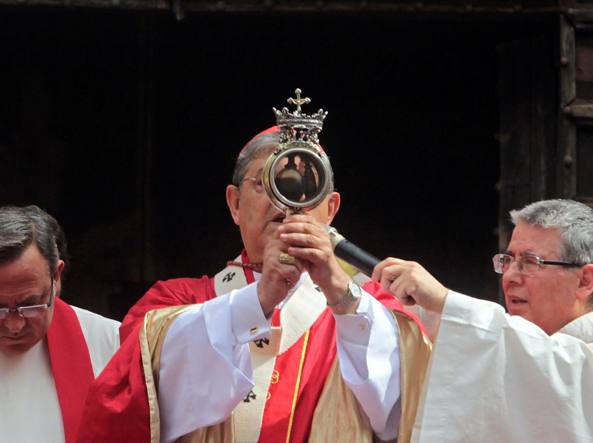The blood of San Gennaro and the explanations of the scientists
The history of the blood of San Gennaro, that is, of the periodic liquefaction - three times a year: on the eve of the first Sunday of May, September 19 and December 16, as well as in special circumstances such as that of Pope Francis' visit - of his relic preserved in the Cathedral of Naples, it is controversial. The first documented episode, contained in the Chronicon Siculum, dates back to 1389: during the demonstrations for the feast of the Assumption the blood in the ampoules appeared in a liquid state.
The Church: not a "miracle" but a "prodigious event"
The same ecclesiastical authorities affirm that the dissolution of the blood, being scientifically inexplicable, falls into the category of prodigious events, and not miracles, and approves its popular veneration but does not oblige Catholics to believe in it.
Blood components
Since 1902 there is the certainty that there is blood content in the ampoules, since a spectroscopic examination conducted by professors Sperindeo and Januario has ascertained the presence of oxyhemoglobin, one of the blood components.
The Cicap experiment
In 1991, researchers from Cicap - the Italian Committee for the control of claims on the paranormal - published in the journal Nature an article entitled "Working bloody miracles" advancing the hypothesis that the origin of liquefaction is thixotropy, that is, the capacity of some fluids. almost solidified to pass, if suitably stirred, in the liquid state. Led by the chemist Luigi Garlaschelli of the University of Pavia, two experts (Franco Ramaccini and Sergio Della Sala) managed to replicate a substance which, in appearance, color and behavior, reproduces exactly the blood like that contained in the ampoules, thus providing scientific proof on the obtainability of a "dissolution" similar to that which underlies the San Gennaro phenomenon. The techniques used were practicable, possibly even in the Middle Ages. Eight years later, astrophysics Margherita Hack, one of the founders of Cicap, also reiterated that it would be "just a chemical reaction".
True blood, scientific criticisms of Cicap
In 1999, however, Professor Giuseppe Geraci of the Federico II University of Naples replied to Cicap, who explained to Corriere del Mezzogiorno that the aforementioned thixotropy had nothing to do with it, and that Cicap, denying the presence of blood in the relic because in at least one case an identical result would have been obtained without blood material, had instead adopted the same technique used by those who do not use a scientific method. : "The blood is there, the miracle is not, everything arises from the chemical degradation of the products, which creates reactions and variations even with changing environmental conditions". In February 2010 Geraci himself ascertained that, at least in one of the ampoules, there would actually be human blood.
When it doesn't melt
The blood of San Gennaro, however, does not always melt despite long waits. It happened, for example, during the visits of John Paul II in 1990 (9-13 November) and of Benedict XVI on 21 October 2007.
